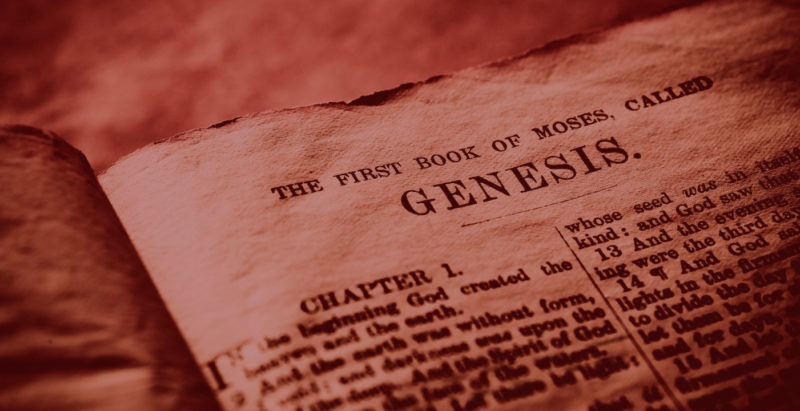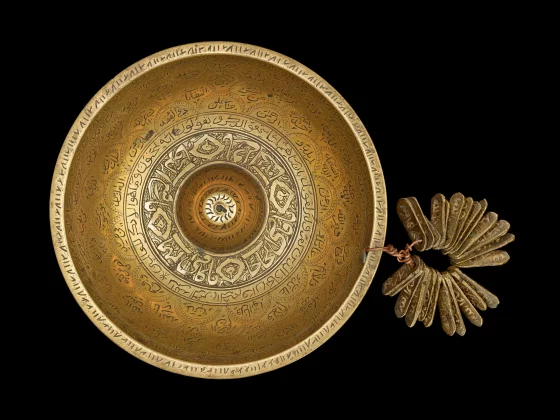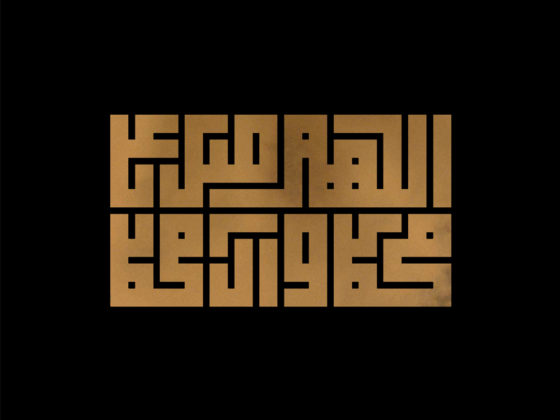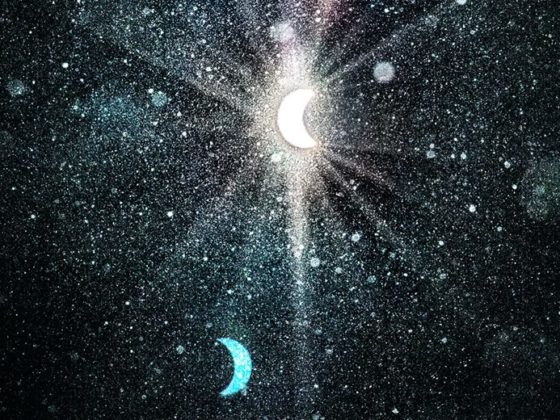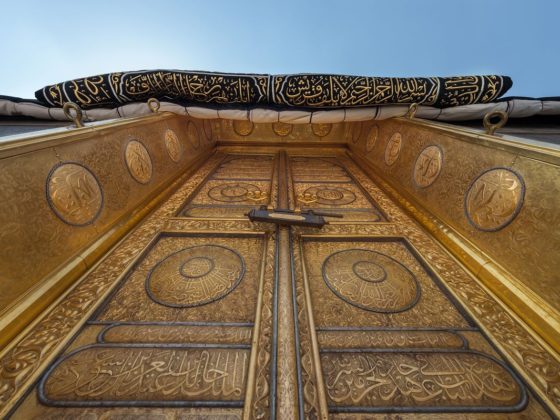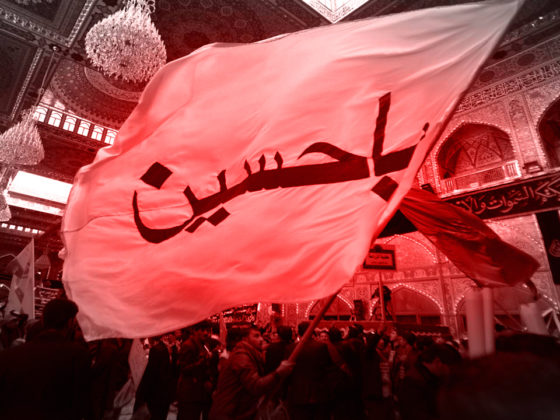As we have stated in many of our studies, the Bible – including both the Old and New Testaments – contains unequivocal predictions concerning the coming of the Last Prophet (S) and the twelve Imams (A) of his lineage.
In chapter 17 of the Book of Genesis, God’s covenant with Abraham-Ibrahim is described as follows:
“When Abram was ninety-nine years old, the Lord came to him, and said, I am God, Ruler of all; go in my ways and be upright in all things, And I will make an agreement between you and me, and your offspring will be greatly increased. And Abram went down on his face on the earth, and the Lord God went on talking with him, and said, As for me, my agreement is made with you, and you will be the father of nations without end. No longer will your name be Abram, but Abraham, for I have made you the father of a number of nations. I will make you very fertile, so that nations will come from you and kings will be your offspring. And I will make between me and you and your seed after you through all generations, an eternal agreement to be a God to you and to your seed after you”
Also in this chapter it is stated:
“As for Ishmael, I have given ear to your prayer: truly I have given him my blessing and I will make him fertile and give him great increase; he will be the father of twelve chiefs, and I will make him a great nation” (Book of Genesis 17:20).
Ishmael is the son of Abraham (Ibrahim), the progenitor of the Arabs and, accordingly, the ancestor of the Prophet Muhammad (S); the “great nation” refers to the Arabs themselves, descending from Ishmael, and the “twelve princes” are the twelve Imams of the prophetic lineage.
There is one detail in the original Hebrew that often escapes the attention of translators. Consider the transliteration of the verse:
“Ule-Yishma’el shmatika hineh berachti oto vehifreyti oto vehirbeyti oto bi mehad—mehad shneym-ashar nesi’im yulid unetativ legoy gadol”
The expression «bi mehad-mehad» is not found in any known translations — neither in Russian, English, German, nor Persian. In Arabic, «bi» is a preposition that means «through» or «by means of». «Mehad-mehad», it seems, is a proper name. Anyone familiar with Arabic will understand the meaning of these words, given the close relationship between Arabic and Hebrew. A literal word-for-word translation would be:
“As for Ishmael, I have given ear to your prayer: truly I have given him my blessing and and I will make him fertile and give him great increase through Mehad-mehad. Twelve leaders will be born from him, and I will bring forth from him a great nation”
“Mehad-mehad” is an incorrect form of “Muhammad” (S). The verse indicates that through him, the descendants of Ishmael (A) will be multiplied, and from him will arise twelve leaders (Imams).
The mention of “Mehad-mehad” in this verse refutes the Jewish (and Sunni) interpretation that it refers not to the Shiite Imams (A) but to the twelve sons of Ishmael (A), whose names are listed later in the same book.
Some modern formulations of the Bible imply that the covenant proceeds only through Isaac, but the words cited above clearly show that all of Abraham’s descendants (A) are included — Ishmael among them: “and I will establish My covenant between Me and you and between your descendants after you in their generations, an everlasting covenant”. Therefore, it is clear that Abraham’s covenant with God is fulfilled with the advent of the twelve Imams.
Abraham was commanded to sacrifice his son. In obedience to God, he prepared Ishmael for the sacrifice, but the Almighty replaced him with a “greater sacrifice”: “We have ransomed him with a greater sacrifice. And We have left it for the latter (generations)” — as stated in the Quran (37:107–108). The ram that substituted for Ishmael became the symbol of the Greater Sacrifice reserved for the “latter generations” — the sacrifice of Husayn (A). It was necessary to await the advent of the universal Prophet and the third of the “twelve princes” for the promise to be fulfilled.
In a hadith from Imam Reza (A) it is stated that God, in reward for Abraham’s (A) grief over Husayn (A), replaced his grief over Ishmael (A). The rituals of the Hajj take place at the very site where Abraham intended to sacrifice his son. The remembrance of the Great Sacrifice is enacted by slaughtering an animal, the meat of which is distributed to the poor. Thus, the Hajj itself is nothing other than a reenactment of Abraham’s covenant, which is fulfilled through the advent of Muhammad (S) and the twelve Imams, the third of whom is Husayn (A).
During the symbolic sacrifice of the Hajj, the head is to be shaved. In many cultures, a shaved head is a sign of mourning, just as garments made of patched fabric — similar to those worn by the pilgrims — signify lamentation. Moreover, white is the color of the burial shroud. As a reminder of the covenant with Abraham, all male participants in the Hajj are also required to be circumcised.
The biblical book of Prophet Isaiah says:
“In that day, the Lord, Yahweh of Armies, called to weeping, to mourning, to baldness, and to dressing in sackcloth” (22:12).
Ishmael, abandoned in the desert, was thirsty, but his thirst was quenched from the Zam-Zam spring. He was supposed to be sacrificed, but was saved at the last moment. However, Husayn’s (A) thirst was not quenched, and his sacrifice became not symbolic, but real. We must pay attention to such hints scattered throughout the sacred Abrahamic history. Karbala is the deep meaning of Hajj.
In the first book of the Bible, there is a mysterious and mystical passage that we will explore in detail here. In the 49th chapter of the Book of Genesis, Jacob-Israel, known as Yakub, is dying and calls his sons together. He says, “Gather yourselves, and I will tell you what will happen to you in the coming days“. Then he adds:
“The scepter will remain with the tribe of Judah (that is, with the Jews, the descendants of Judah), and in his family there will always be a lawgiver, until Sheloch comes, whom the nations will obey and serve” (49:10-12).
The mysterious word “Sheloch” is not found elsewhere in the Bible and has no exact translation. It must refer to someone who will come in the last times and will not be from among the Jews. Perhaps Sheloch is the same Prophet, “like Moses,” mentioned in Deuteronomy: “The Lord your God will raise up for you a Prophet from your midst, from your brethren, like me; him you shall listen to” (18:15).
“From your brethren” refers to the descendants of Abraham, specifically Ishmael, as it is said about him elsewhere: “He (Ishmael) will live in the presence of all his brethren” (Genesis, 16:12). Another likely version is that Sheloch is one of those “twelve princes,” and above all, the last of them, Imam Mahdi (A).
Our interpretation of the word “Sheloch” is that the first letter “sh” is an abbreviated form of the pronoun “asher”, meaning “he,” and “lokh,” as in Arabic, means “him.” In this case, the translation of the verse would read: “The scepter will always remain with the tribe of Judah, and in his family there will always be a lawgiver, until the HE to whom it belongs comes, whom the nations will obey and serve”. In other words, prophecy and kingship in the tribe of Israel is only a temporary trust: until the “he to whom it belongs” comes and whom “the nations will obey and serve”
The history of Karbala begins with Ishmael, continues with Husayn, and ends with the Mahdi, the seal of the successors, “the one to whom it belongs,” completing the Abrahamic cycle. This cycle puts an end to the great test, which was the symbolic sacrifice of Ishmael and the great sacrifice of Husayn. Abraham and Ishmael began this history, and Husayn prepared and equipped the army for its final victory when the Redeemer comes. The rites of Hajj, performed at the end of the Muslim year, reproduce the beginning of the covenant. The mourning ceremonies of Ashura, which fall at the beginning of the new year, are its fulfillment. The army of Imam Mahdi gathers in great rites of mourning for the “great sacrifice” of Husayn. Husayn left Mecca, from the Kaaba at the beginning of the Hajj, and went to Karbala. Perhaps this is why the ziyarat of Karbala is higher than the Hajj, according to many hadiths.
In the Book of the Prophet Jeremiah, the tragedy of Karbala is described as follows:
“And the sword shall devour, and it shall be filled and drunk with their blood: for it is a sacrifice unto the Lord God of hosts in the land of the north, by the river Euphrates” (46:10).
The Euphrates is also known as the Furat, the river where Imam Husayn (A) was killed. Since this passage is set in the context of revenge motives, many believe that it refers to the arrival of the Mahdi. In Genesis, Sheloch “washes his clothes in wine and his robe in the blood of grapes”, where wine is a traditional symbol of blood shed for the sake of sacred revenge.
Another prophecy about the murder of Husayn (A) and the final revenge for his blood can be found in the New Testament, in the Apocalypse, in the image of the opening of the sixth seal:
“I watched as he opened the sixth seal. There was a great earthquake. The sun turned black like sackcloth made of goat hair, the whole moon turned blood red, and the stars in the sky fell to earth, as figs drop from a fig tree when shaken by a strong wind. The heavens receded like a scroll being rolled up, and every mountain and island was removed from its place. Then the kings of the earth, the princes, the generals, the rich, the mighty, and everyone else, both slave and free, hid in caves and among the rocks of the mountains. They called to the mountains and the rocks, “Fall on us and hide us from the face of him who sits on the throne and from the wrath of the Lamb! For the great day of their wrath has come, and who can withstand it?”
All that is said here is not a dogma, but information for your own analysis. This may make us think that the covenant with Abraham (A) is not a result, but a long process that is being implemented in his descendants. So Ismail’s sacrifice was set aside for “the last generations”, according to the Qur’an. Only by looking at this story from a broader perspective, which culminates in the arrival of the Mahdi and the building of the Kingdom of Justice at the end, can we understand it properly.
